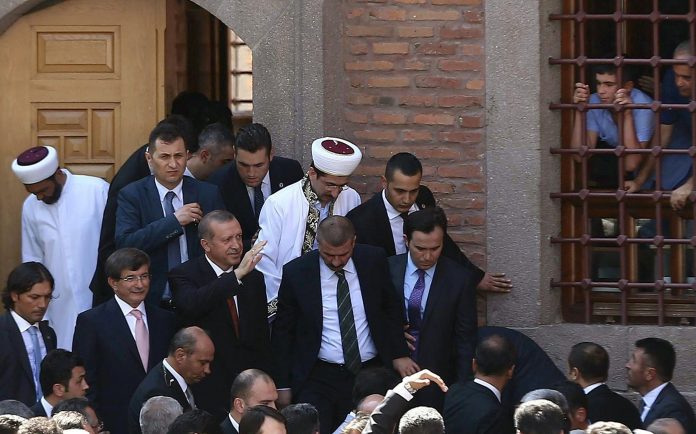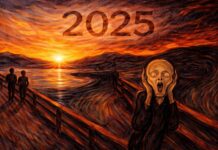In my last column (1), I criticized two aspects of the NYT’s writing on Turkey that need more attention — those of word choice, and translating idioms from Turkish into English appropriate for the context. For that purpose, I used examples from a recent article by the NYT’s primary Turkish correspondent, Ceylan Yeğinsu (2). This article will address two other issues: the pictures that are used to accompany the NYT’s Turkish features, and logical contradictions that occur within a single article.
Accompanying pictures
What kinds of pictures are chosen by NYT editors to accompany their articles on Turkey? For more than a decade, pictures of head-scarved women, or if possible even women in burkas or chadoors, were sine qua non. Actually, social statistics show that only a bit more than half of Turkish women wear head-scarves (while burkas or chadoors are not at all common), or that the type of headscarf actually provides information about the social class or ideology of the wearer. Never mind; this is what the NYT persists in doing. The issue is not whether head-scarves should be shown or not. Rather, it is that the NYT makes a conscious choice to consistently illustrate its articles on a certain country with variations on a single stereotype, through which it is trying to imprint certain associated concepts on its readers, so that henceforth this is what they will have in mind whenever Turkey is mentioned.
Of course, this may not be a conscious or deliberate choice. It’s quite likely that the NYT editors who have been choosing these pictures over the fifteen years when I’ve been paying close attention to the paper’s coverage, have not even been aware that their pictures were perpetuating stereotypes. Orientalism often runs so deep that Westerners who think they are making “progressive” statements or choices about Muslim countries are in fact blinded by their ideology.
In the past five years or so, the NYT has focused increasing attention on creating ways to attack the leading Turkish political figure of Tayyip Erdoğan. Their coverage of Mr. Erdoğan, as I’ve explained in other Serbestiyet articles (3), has never been positive. But until about five years ago, the NYT simply let their articles do the slandering. Now, for any article that refers to the Turkish President, a picture is chosen that portrays him as provocatively as possible.
The most malicious example of this trend was the picture chosen to accompany Yeğinsu’s infamous “AKP=ISIS” article from September 2014, which provoked diplomatic tensions between Turkey and the US (4). The article accused the Turkish authorities of turning a blind eye to ISIS recruitment in Hacı Bayram, an Ankara neighborhood, and a picture showing President Erdoğan leaving a mosque in the same neighborhood was supplied for the readers. The implication was clear. The reaction from the Turkish government and press was so severe that the NYT was forced to retract the picture and provide a correction. The NYT’s Executive Editor, Dean Baquet, also released a statement claiming, rather disingenuously, that the picture did not suggest that President Erdoğan sympathized with ISIS.
As for the more recent article from two weeks ago, the thumbnail picture seen above that originally accompanied the link in the NYT’s on-line site was clearly chosen to suggest that the Turkish President is some sort of blowhard bully (5). Really, this is the stuff tabloids are made of. This sort of manipulative journalism should be repudiated, and is surely not worthy of the NYT.
Back to logic and interpretation
Last but not least, I want to return to a problem in the NYT’s writing on Turkey that I’ve dissected before: the logical contradictions that emerge in their interpretations. The two concluding paragraphs of Yeğinsu’s article provide a strange juxtaposition. The first paragraph explains that the Turkish government does not want a Kurdish state in northern Syria because it might prove inspirational for the PKK:
Turkey fears that support from Russia and the United States for the P.Y.D. could create an autonomous Kurdish region in Syria that would spur the separatist ambitions of
Kurdish militants in Turkey.
Informed readers may wonder how the militants referred to could be “spurred” even more — after thirty years of conflict and, most recently, months of intense street fighting with the Turkish security forces. The PKK militants have placed entire neighborhoods of cities in Turkey’s SE under siege. The following paragraph could then be read with exactly that thought in mind:
The Turkish military started a major counterinsurgency campaign against Kurdish militants in the predominantly Kurdish southeast region last year, imposing round-the-
clock curfews in many towns and cities. Hundreds of militants and civilians have died in the operations.
First, there is a wording “problem” in the last sentence that seems designed to lead readers into thinking (erroneously) that hundreds of civilians have died. Actually, it is hundreds of militants (urban guerrillas) that have died, and relatively far fewer ordinary civilians. But Yeğinsu and the NYT are toeing the same line as all the accusations that have recently been aimed at the Turkish security forces for supposedly killing “hundreds” of civilians during the ongoing violence. While the vast majority of alleged “civilians” killed by the security forces are PKK fighters, the same PKK then tells human rights watchdogs that the casualties they suffered were actually “civilians,” which is then repeated by such international observers who, unfortunately, have repeatedly shown themselves more willing to believe violent leftist militants than the Turkish government, which while democratically accountable to its own citizens is always suspected of the worst on the assumption that it is always the state or the government that must be culpable and also the source of all falsehood.
But more importantly, that second paragraph from Yeğinsu actually reflects just how serious the current situation is, and thereby enters into a logical contradiction with the previous paragraph. If the circumstances are already that dire, then how would an independent Kurdish state in northern Syria further exacerbate the existing situation? A decade ago, northern Iraq’s Kurdish region used to be the object of hysterical articles in the Turkish press, which was given to predicting then, too, that an independent state with a Kurdish identity would be the prelude to the dismemberment of the Turkish state at the hands of “Kurdish militants.”
Today, Ankara and Erbil are such close partners that it would be no surprise if Ankara were to support Erbil’s potential decision to hold a referendum on independence. How did that happen? It has to do with ideological change and the nature of the political system. Mesut Barzani long ago abandoned a radical outlook and program, and has guided northern Iraq towards democracy and a market economy. This is what enabled Ankara to trust him. Erbil’s government is now a rational, predictable political actor.
In contrast, the militants in northern Syria still cling to their Cold War ideology, and entertain the fantasy of creating some sort of ethnically monolithic Marxist state. Neither the NYT nor the State Department is coming clean on this. Instead they endlessly repeat the “Syrian Kurdish militants” formula in order to obscure these militants’ true ideology and aims. The role that the Obama Administration would like to see the PYD playing in the struggle against ISIS is comparable to that played by the Mojahedin-e-Khalq, that cultish, Marxist Iranian militant group which for many years was used by the U.S. government to carry out espionage and selective assassinations in Iran.
Consequently, what Yeğinsu “explains” misses the point, and the author is forced to resort to weak logic in an attempt to cover up the real issue. That is the ideology of the PKK and PYD militants, and their refusal to forego armed insurrection. The PKK/PYD are simply unwilling to participate in a political system which now is fully open to Kurdish activists and politicians who want to work peacefully for greater rights and justice for all of Turkey’s citizens.
NOTES
(2) http://www.nytimes.com/2016/02/11/world/europe/recep-tayyip-erdogan-syria-kurds.html?_r=0
(4) “ISIS Draws a Steady Stream of Recruits From Turkey” (15 September 2014). http://www.nytimes.com/2014/09/16/world/europe/turkey-is-a-steady-source-of-isis-recruits.html
(5) While writing this article I looked back at the NYT piece and was interested to find that the original thumbnail picture used for the article is no longer there. Also, I had earlier criticized the translation of part of a recent speech by President Erdoğan supplied by Yeğinsu for her article. The video that accompanies the article’s text actually contains a different — and better — translation than the translation in her article.














